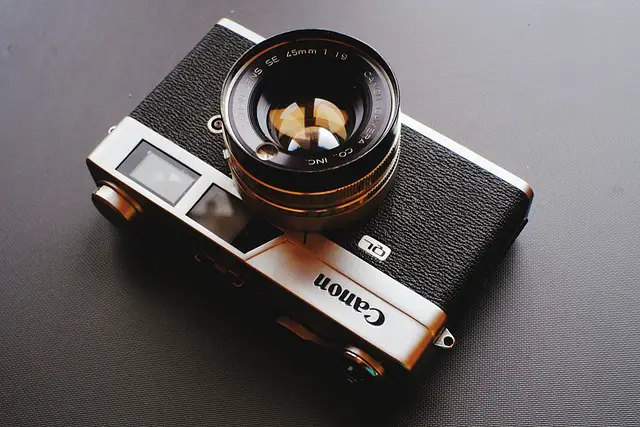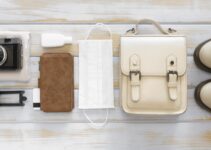How to clean fungus from camera bag?
Have you ever discovered an unwelcome surprise inside your camera bag—a stubborn patch of fungus?
This common problem, especially in humid environments, can damage your gear and compromise your photography.
Fungus thrives in dark, damp conditions, making camera bags an ideal breeding ground if they’re not stored properly. Addressing this issue promptly is crucial to preserving your equipment.
Cleaning the fungus involves more than just a surface wipe; it requires a methodical approach to ensure all traces are removed without damaging your bag.
This guide will walk you through effective steps to restore your camera bag and safeguard your valuable gear.
Here what is the difference between billigham fibernyte and canvas?
Can you clean fungus from camera bag?
Yes, you can clean fungus from a camera bag, but it requires care to avoid damaging the bag or spreading the spores.
First, remove all items from the bag and vacuum it thoroughly to remove loose spores. Next, take the bag outside to prevent spores from contaminating your home.
Use a soft brush or cloth to gently scrub the affected areas. For more stubborn fungus, a mixture of mild soap and water can be used, but ensure it’s applied sparingly and tested on a small area first.
After cleaning, allow the bag to dry completely in a well-ventilated area, away from direct sunlight.
To prevent future growth, store the bag in a dry, cool place, and consider using silica gel packets or a dehumidifier to control moisture. Regular inspection and maintenance will help keep your gear in good condition.
Is it worth to clean fungus from camera bag?
Cleaning fungus from a camera bag is often worth the effort, especially if the fungus has spread to the bag’s compartments or your camera gear.

Fungus can potentially transfer to your camera and lenses, causing long-term damage and affecting performance.
By cleaning the bag, you reduce the risk of contaminating your equipment and can extend the lifespan of both the bag and your gear.
Here, how do you support a heavy camera lens?
However, if the bag is heavily infested or damaged, it might be more practical to replace it, especially if cleaning is unlikely to fully remove the fungus or if it’s a high-value item.
Regular maintenance and proper storage of your camera equipment can prevent future infestations, ensuring your gear remains in optimal condition and reducing the need for extensive cleaning.
How to clean fungus from camera bag?
To clean fungus from a camera bag, start by removing all items and taking the bag outside to avoid spreading spores indoors.
Use a vacuum with a brush attachment to gently remove loose spores and debris from the bag. Next, use a soft, dry cloth or brush to scrub the affected areas.
For persistent fungus, lightly dampen a cloth with a mixture of mild soap and water, then gently clean the affected spots. Avoid soaking the bag; test any cleaning solution on a small, inconspicuous area first.
After cleaning, allow the bag to air dry completely in a well-ventilated area, away from direct sunlight.
To prevent future growth, store the bag in a dry place and consider using silica gel packets or a dehumidifier to manage humidity. Regular inspections and cleaning will help maintain your bag and protect your camera gear.
How do you remove fungus from a bag?
To remove fungus from a bag, follow these steps:
- Empty and Isolate: Remove all contents and take the bag outside to prevent spreading spores indoors.
- Vacuum: Use a vacuum with a brush attachment to gently remove loose spores and debris from the bag.
- Brush: Use a soft brush or cloth to gently scrub the affected areas, avoiding excessive moisture.
- Clean: For stubborn fungus, lightly dampen a cloth with a solution of mild soap and water, and gently clean the affected spots. Always test the solution on a small, inconspicuous area first.
- Dry: Allow the bag to dry completely in a well-ventilated area away from direct sunlight to prevent moisture buildup.
- Prevention: Store the bag in a dry, cool place. Use silica gel packets or a dehumidifier to control humidity and prevent future growth.
Regular inspection and maintenance will help keep the bag free from fungus.
Here, how do you unwrinkle a prade nylon camera bag?
Can fungus be cleaned from a camera?
Yes, fungus can be cleaned from a camera, but it requires careful handling to avoid damage.
If you notice fungus on your camera lens or sensor, it’s best to seek professional help, especially for complex cleaning. For lens fungus, a professional technician can disassemble the lens to clean the internal elements safely.
If you’re dealing with external fungus, gently clean the affected areas with a soft brush or microfiber cloth.
For persistent cases, using a lens cleaning solution specifically designed for fungus can help, but avoid using too much liquid. Never use abrasive materials or excessive pressure, as this can scratch the lens or sensor.
Regularly inspect and maintain your camera, and store it in a dry, controlled environment to prevent future fungus growth. If fungus is severe or affects internal components, professional cleaning or repair may be necessary.
How do you deep clean a camera bag?
To deep clean a camera bag, start by emptying all compartments and removing any loose items. First, vacuum the interior and exterior to remove dust and debris.
Next, spot clean any stains or spots using a mild soap solution and a soft cloth. For stubborn stains, use a soft-bristled brush and gently scrub the affected areas.

Avoid soaking the bag; instead, use a damp cloth for cleaning and ensure it is thoroughly wrung out. If the bag is machine washable, follow the manufacturer’s care instructions, usually on a gentle cycle and with mild detergent.
After cleaning, allow the bag to air dry completely in a well-ventilated area, away from direct sunlight. For added freshness, consider using a fabric refresher spray.
Finally, inspect and organize the bag before reinserting your camera gear, and store it in a dry, cool place to prevent future issues.
How do you remove fungus from plastic?
To remove fungus from plastic, follow these steps:
- Clean the Surface: Start by washing the plastic with warm, soapy water to remove any surface dirt and grime. Use a soft cloth or sponge to avoid scratching the plastic.
- Apply Vinegar Solution: Mix equal parts white vinegar and water in a spray bottle. Spray the solution directly onto the fungal growth and let it sit for about 10-15 minutes. Vinegar helps to kill the fungus and remove it.
- Scrub Gently: Use a soft brush or cloth to gently scrub the affected areas. Be careful not to scratch the plastic surface.
- Rinse and Dry: Rinse the plastic thoroughly with clean water to remove any vinegar residue. Dry the surface completely with a clean, dry cloth.
- Prevent Future Growth: Store the plastic items in a dry, well-ventilated area to prevent future fungus growth.
Here, how to clean manfrotto camera bag?
7 Tips to clean Fungus from camera bag
1. Empty and Inspect
Begin by removing all items from the camera bag. This includes any camera gear, lenses, and accessories. Inspect each item for signs of fungus to ensure it’s not spreading to your equipment.
Take the bag outside to prevent spores from contaminating your home. This step helps you identify the extent of the infestation and protects your gear from potential damage during cleaning. It also ensures that you can thoroughly clean every part of the bag without leaving any contaminants behind.
2. Vacuum Thoroughly
Use a vacuum with a brush attachment to gently remove loose spores, dust, and debris from the bag’s interior and exterior. Be thorough but gentle to avoid damaging the bag’s material.
The vacuum helps to remove any surface spores and particles before you proceed with more intensive cleaning. This step is crucial for preventing the spread of fungus to other areas and makes the following cleaning processes more effective by removing the bulk of the contaminants.
3. Use a Soft Brush
After vacuuming, use a soft brush to gently scrub the affected areas of the bag. This helps to dislodge any remaining fungus that may not have been picked up by the vacuum.
Be cautious and use light pressure to avoid damaging the fabric. The brush should have soft bristles to effectively remove spores without scratching or wearing down the material. This step helps ensure that you are cleaning deep into the fibers of the bag where fungus might be hiding.
4. Clean with a Mild Solution
Prepare a cleaning solution of mild soap and water. Dampen a cloth with this solution and gently wipe down the affected areas of the bag. Avoid soaking the bag; use a damp cloth rather than a wet one.
Here, is it safe to pack a camera bag when going through the airpot security?
This method helps to kill and remove any remaining fungus while preventing excess moisture that could lead to further issues. Always test the solution on a small, inconspicuous area first to ensure it doesn’t damage the bag’s material.
5. Air Dry Completely
After cleaning, allow the bag to air dry completely in a well-ventilated area. Place it in a location away from direct sunlight to prevent potential damage from UV rays.
Ensure that the bag is fully dry before storing it or reinserting your gear. Proper drying is essential to prevent any remaining moisture from promoting further fungal growth. A well-ventilated area helps expedite the drying process and reduces the risk of mold reappearing.
6. Use Silica Gel Packs
To prevent future fungus growth, place silica gel packs inside the bag. Silica gel absorbs moisture, helping to keep the interior dry and inhospitable to mold and fungus.
Ensure you replace or refresh these packs periodically to maintain their effectiveness. This step is crucial for maintaining a dry environment inside the bag and preventing the conditions that allow fungus to thrive. Silica gel packs are a simple yet effective preventative measure.
7. Store in a Dry Place
Store the camera bag in a cool, dry location to minimize humidity, which can encourage fungal growth. Avoid areas with high moisture levels or direct sunlight, as these conditions can contribute to mold and mildew.
Use a dehumidifier in the storage area if necessary to maintain low humidity. Proper storage is key to preventing future infestations and ensuring that your bag remains in good condition. Regularly check the storage area for any signs of moisture or mold.
7 Steps to clean fungus from camera bag
1. Remove All Contents
Begin by emptying the camera bag of all its contents, including cameras, lenses, and accessories. This ensures that you can thoroughly clean the bag without risking damage to your gear.

Check each item for signs of fungus to ensure it hasn’t spread to your equipment.
Removing everything from the bag allows you to address the fungus issue directly and prevents contamination of your gear during the cleaning process. Place the contents in a clean, dry area to keep them safe while you work on the bag.
2. Take the Bag Outside
Move the camera bag outside to prevent the spread of fungal spores in your home. This step is crucial to avoid contaminating your living space with mold spores. Working outdoors or in a well-ventilated area reduces the risk of spores settling on other surfaces.
Ensure the bag is placed on a clean surface to prevent recontamination. This environment also allows for better ventilation during the cleaning process, helping the bag to dry faster and more effectively.
3. Vacuum the Bag
Use a vacuum cleaner with a brush attachment to gently remove loose spores, dust, and debris from the bag. Focus on both the interior and exterior surfaces. The vacuuming process helps to eliminate surface contaminants and prepare the bag for deeper cleaning.
Here, 10 best shimoda camera bag?
Ensure that the vacuuming is done carefully to avoid damaging the bag’s material. This step helps to remove the bulk of the fungus and particles before applying any cleaning solutions.
4. Brush Affected Areas
After vacuuming, use a soft brush or cloth to gently scrub the areas affected by fungus. This helps to dislodge any remaining spores and fungus that the vacuum might have missed.
Be gentle to avoid damaging the bag’s fabric or structure. A soft brush ensures that you clean deep into the fibers without causing abrasion. This step is crucial for removing stubborn fungus and ensuring that the bag is thoroughly cleaned.
5. Clean with a Mild Solution
Prepare a mixture of mild soap and water. Dampen a cloth with this solution and gently wipe down the affected areas of the bag. Avoid soaking the bag; use a well-wrung cloth to prevent excessive moisture.
This step helps to kill and remove remaining fungus while cleaning the bag. Test the solution on a small, inconspicuous area first to ensure it does not damage the bag. This method helps to thoroughly clean the bag without introducing excess moisture.
6. Dry the Bag Thoroughly
Allow the bag to air dry completely in a well-ventilated area, away from direct sunlight. Proper drying is essential to prevent any remaining moisture from fostering new fungal growth.
Ensure the bag is fully dried before storing it or reinserting your gear. Avoid placing the bag in a damp or humid environment, as this could lead to further mold issues. Adequate drying helps to ensure that the cleaning process is effective and prevents future infestations.
7. Store with Preventative Measures
To prevent future fungal growth, store the camera bag in a dry, cool place. Consider using silica gel packets or a dehumidifier to control moisture levels inside the bag.
Regularly check the bag for any signs of moisture or mold. Proper storage conditions are crucial for maintaining a clean, dry environment that deters fungus. By managing humidity and ensuring the bag is stored correctly, you reduce the risk of future fungal issues and protect your equipment.
5 Method to clean fungus from camera bag
1. Vacuuming
Start by using a vacuum cleaner with a brush attachment to remove loose spores, dust, and debris from the camera bag. Carefully vacuum both the interior and exterior surfaces.
This method helps to eliminate surface-level contaminants and prepares the bag for deeper cleaning.
Be gentle to avoid damaging the bag’s material. Vacuuming is an effective first step in removing visible fungal growth and preventing the spread of spores, making subsequent cleaning methods more efficient.
2. Brushing
Use a soft brush to gently scrub the affected areas of the bag. This technique helps to dislodge and remove any remaining fungus that the vacuum might not have picked up.
A brush with soft bristles is ideal to avoid scratching or damaging the bag’s fabric. Be thorough but gentle to ensure you’re cleaning deep into the fibers without causing wear. Brushing is particularly useful for stubborn fungal spots that require extra attention.
3. Vinegar Solution
Mix equal parts white vinegar and water in a spray bottle. Spray the solution onto the affected areas of the bag and let it sit for about 10-15 minutes. Vinegar helps to kill and dissolve the fungus.
After letting it sit, use a clean, damp cloth to wipe down the area and remove any residual fungus and solution. This method is effective for both killing and cleaning fungal growth, and vinegar is a natural and non-toxic option.
4. Mild Soap and Water
Prepare a solution of mild soap and water. Dampen a cloth with the solution and gently wipe down the affected areas of the bag. Avoid soaking the bag; instead, use a well-wrung cloth to prevent excess moisture.
This method helps to clean and disinfect the bag, removing any remaining fungus. Always test the soap solution on a small, inconspicuous area first to ensure it does not damage the bag’s material. This approach is gentle yet effective for cleaning.
5. Professional Cleaning
For severe fungal infestations or delicate bags, consider professional cleaning services. Professionals have specialized tools and cleaning solutions to address deep-seated fungus without damaging the bag. This method is ideal for high-value or complex bags where DIY cleaning might be insufficient or risky.
Professional services ensure thorough cleaning and can also provide treatment to prevent future fungal growth. It’s a reliable option when dealing with significant contamination or valuable equipment.
5 Benefits to clean fungus from camera bag
1. Protects Equipment
Cleaning fungus from your camera bag prevents spores from transferring to your camera and lenses.
Fungus can cause damage to optical elements, leading to degraded image quality or permanent damage. By removing fungus, you safeguard your valuable equipment from potential harm. This proactive measure ensures that your gear remains in optimal condition and extends its lifespan.
Regular cleaning helps maintain the performance and integrity of your camera, ensuring that it continues to function effectively and deliver high-quality results.
2. Prevents Mold Spread
Fungus in a camera bag can spread rapidly if left untreated, potentially affecting other items and areas. By cleaning the bag thoroughly, you stop the spread of mold and prevent it from contaminating other gear or storage areas.
This helps to maintain a clean environment for your equipment and reduces the risk of widespread mold problems. Preventing the spread of fungus ensures that your entire collection of gear remains protected and free from contamination.
3. Improves Bag Longevity
Regularly cleaning and maintaining your camera bag can significantly extend its lifespan.
Fungus can deteriorate the bag’s material over time, leading to wear and tear. By removing fungus and addressing any issues promptly, you prevent further damage and ensure that the bag remains in good condition.
This care helps preserve the structural integrity and appearance of the bag, allowing you to use it for a longer period without needing frequent replacements.
4. Enhances Hygiene
Cleaning fungus from your camera bag improves overall hygiene by eliminating mold spores and contaminants.
This is especially important if you frequently handle your camera gear or store it in various locations. A clean bag ensures that you’re not exposed to harmful mold spores, which can affect your health and well-being.
Enhancing hygiene also contributes to a more pleasant user experience, as a clean bag feels better to handle and reduces the risk of allergic reactions or respiratory issues.
5. Maintains Aesthetic Appeal
A clean camera bag looks better and reflects positively on your professionalism and care for your gear. Fungus and mold can cause unsightly stains and discoloration, diminishing the bag’s appearance.
Regular cleaning helps to maintain the bag’s aesthetic appeal, ensuring it remains visually appealing and professional.
A well-maintained bag not only looks good but also helps you present yourself and your equipment in the best possible light, whether for personal use or professional assignments.
Requesting tips to clean mold/mildew off a camera bag
Here’s a table summarizing tips for cleaning mold or mildew off a camera bag:
| Tip |
Explanation |
| 1. Empty and Inspect |
Remove all items from the bag and inspect each for mold. Take the bag outside to prevent spores from spreading indoors. This step ensures thorough cleaning and safety. |
| 2. Vacuum Thoroughly |
Use a vacuum with a brush attachment to remove loose spores and debris from both the interior and exterior of the bag. This prepares the surface for more detailed cleaning. |
| 3. Use a Soft Brush |
Gently scrub affected areas with a soft brush to dislodge mold without damaging the bag’s material. This helps to remove stubborn mold that the vacuum may have missed. |
| 4. Clean with Vinegar Solution |
Mix equal parts white vinegar and water, apply to affected areas, and let it sit for 10-15 minutes. Vinegar kills mold and helps in cleaning. Wipe with a damp cloth. |
| 5. Dry Completely |
Allow the bag to air dry thoroughly in a well-ventilated area away from direct sunlight. Ensure it is completely dry to prevent future mold growth. |
| 6. Use Silica Gel Packs |
Place silica gel packets inside the bag to absorb moisture and prevent mold from returning. This helps to keep the environment inside the bag dry. |
| 7. Store Properly |
Store the bag in a cool, dry place with low humidity. Avoid damp environments and use a dehumidifier if necessary to prevent mold reoccurrence. |
Related faq’s
Any way to remove possible fungus/condensation from within camera lens? I placed it in a sealed plastic bag with silica gel for a week, however it has not changed much with the lens.
Removing fungus or condensation from within a camera lens is best handled by a professional technician.
DIY methods like placing the lens in a sealed plastic bag with silica gel can help manage external moisture but may not address internal issues.
Fungus within the lens often requires disassembly to clean effectively. Professionals have the tools and expertise to safely open the lens, clean the internal elements, and address any condensation problems.
If fungus or moisture persists, seeking professional service ensures thorough and safe removal, preventing potential damage to the lens’s optical elements.
Conclusion
Cleaning fungus from a camera bag is essential to protect your gear and extend the bag’s lifespan. Start by removing all contents and inspecting the bag, then take it outside to prevent spreading spores.
Vacuuming, brushing, and using a mild cleaning solution like vinegar or soapy water can effectively remove the fungus. Ensure the bag is thoroughly dried in a well-ventilated area to prevent future growth.
Using silica gel packets and storing the bag in a dry, cool place can help maintain a fungus-free environment. Regular maintenance and proper storage are key to keeping your camera bag in optimal condition.










